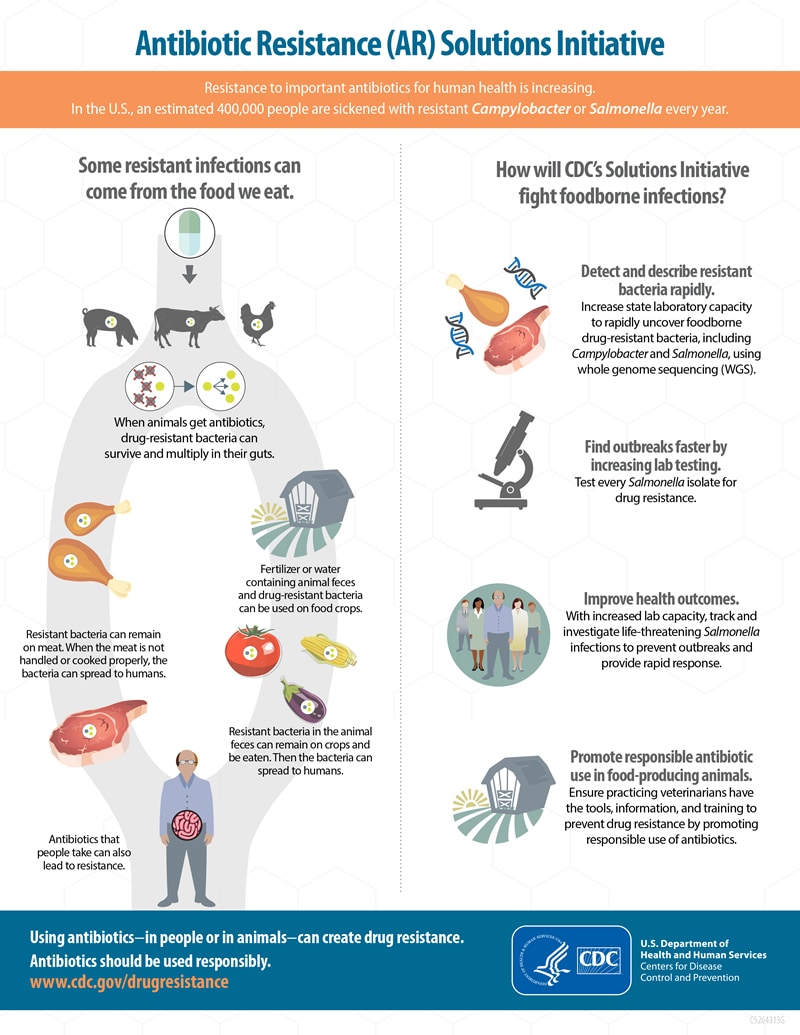Antibiotic Resistance and Food

Infographic Details
Antibiotic Resistance (AR) Solutions Initiative
Resistance to important antibiotics for human health is increasing. In the U.S., an estimated 400,000 people are sickened with resistant Campylobacter or Salmonella every year.
Some resistant infections can come from the food we eat.
- When animals get antibiotics, drug-resistant bacteria can survive and multiply in their guts.
- Fertilizer or water containing animal feces and drug-resistant bacteria can be used on food crops.
- Resistant bacteria can remain on meat. When the meat is not handled or cooked properly, the bacteria can spread to humans.
- Antibiotics that people take can also lead to resistance.
How will CDC’s Solutions Initiative fight foodborne infections?
- Detect and describe resistant bacteria rapidly. Increase state laboratory capacity to rapidly uncover foodborne drug-resistant bacteria, including Campylobacter and Salmonella, using whole genome sequencing (WGS).
- Find outbreaks faster by increasing lab testing. Test every Salmonella isolate for drug resistance.
- Improve health outcomes. With increased lab capacity, track and investigate life-threatening Salmonella infections to prevent outbreaks and provide rapid response.
- Promote responsible antibiotic use in food-producing animals. Ensure practicing veterinarians have the tools, information, and training to prevent drug resistance by promoting responsible use of antibiotics.






















.png)











No hay comentarios:
Publicar un comentario